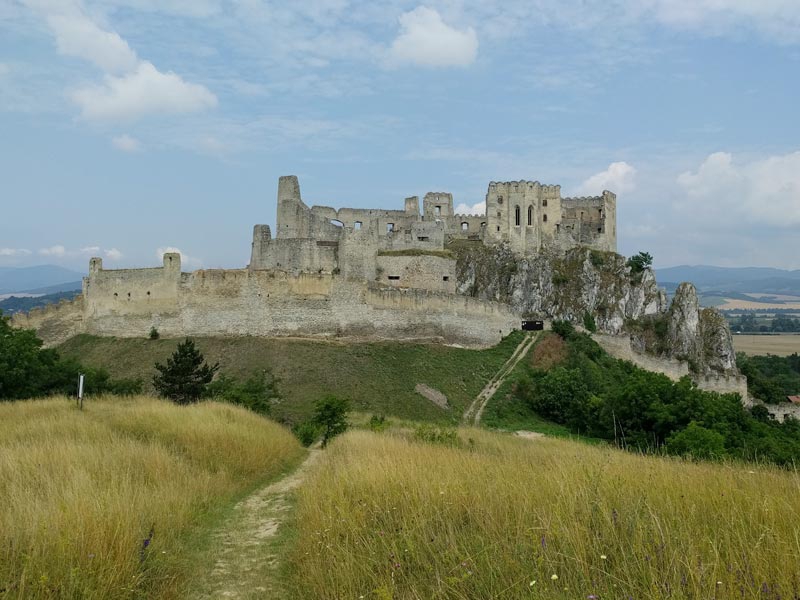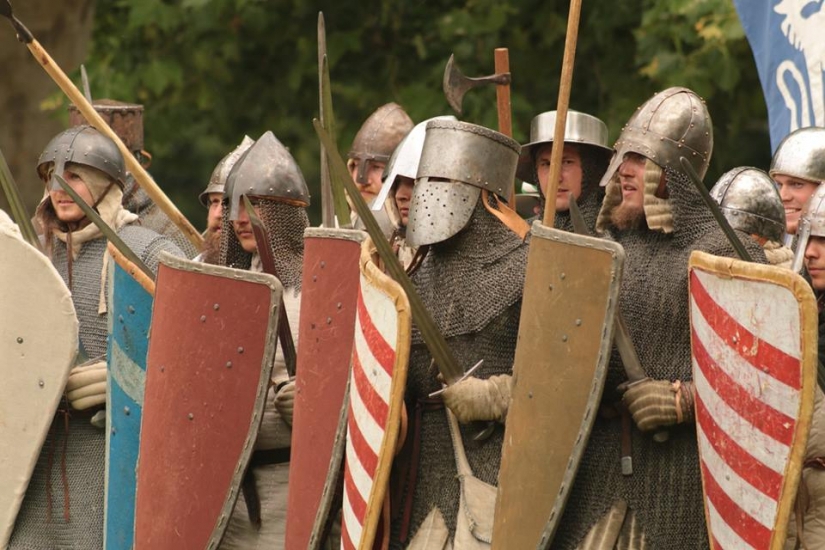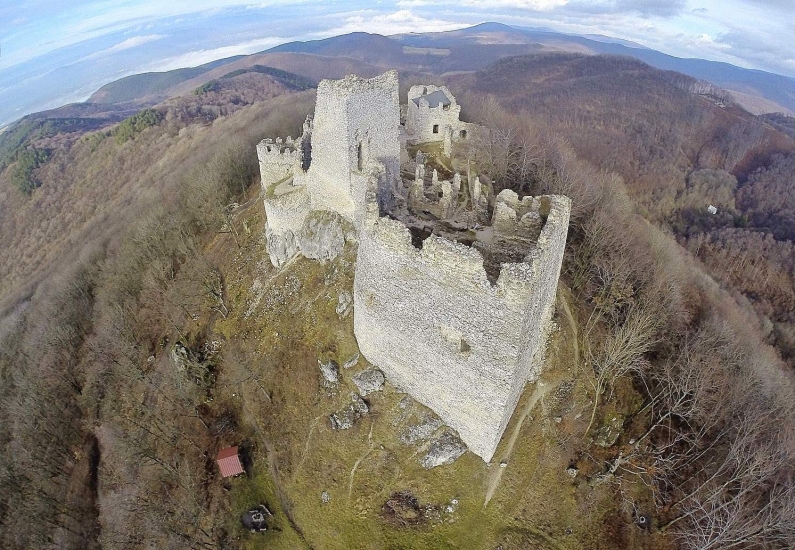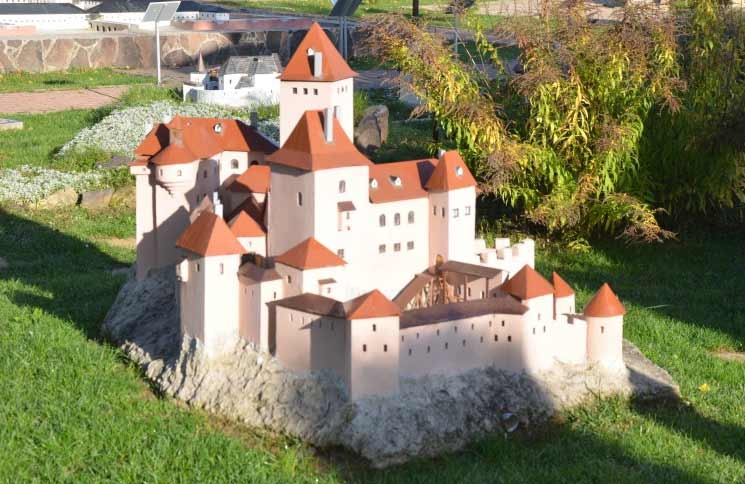Beckov Castle
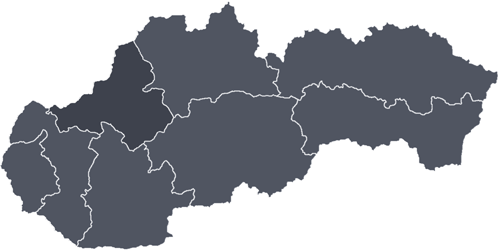
Category: Castles
Region: Trenčín Region
District: Nové Mesto nad Váhom
City / Municipality: Beckov
Tourist location: Považie - Middle Váh region (Stredné Považie)
National cultural Monument
District: Nové Mesto nad Váhom
City / Municipality: Beckov
Tourist location: Považie - Middle Váh region (Stredné Považie)
National cultural Monument
It was the castle of kings, mighty magnates and knights, a castle that resisted both the Tatars and the Turks. Its history is shrouded in legends that enhance the romance of its present form. Although marred by the devastating fire almost 300 years ago, its beauty has been preserved thanks to the ongoing renovations, so that you, and we believe future generations too, can enjoy it as well.
However, the goal of the effort is not only to preserve the castle, but to bring it back to life so that when you visit, you can experience history for yourself – touch it through interactive exhibitions and games, experience it during performances, taste thanks to period cuisine and admire it in the authentic work of craftsmen. Just as in the days of its glory, the castle today is a meeting place – thus behind its gates, there are hidden not just the European Middle Ages, but also distant cultures and worlds of fantastic literature and fairy tales, concert halls, theatre stages and galleries. The impressive setting of the castle is also a suitable place for social and corporate events, as well as celebrations of important personal or family events. Here, everyone can enjoy pleasant moments of relaxation, knowledge, and fun according to their preferences.
History of Beckov castle
Archaeological finds prove the existence of human settlements in the area of Beckov since the middle of the Early Stone Age (270,000-23,000 years BCE). The oldest settlement on the castle hill is documented from the Early Iron Age (late 400 BCE – 0). Because of its strategic location on the north-south trade route and at the ford over the Váh River, the cliff became a patrol station and during Great Moravia (9th – 10th century AD) a wooden fort was built on it.The name of the castle appears for the first time in written sources in the turn of the 12th and 13th centuries. The Hungarian chronicler Anonymus mentions it as "castrum Blundus" with other castles occupied by the old Hungarians at the turn of the 9th and 10th centuries. In the deed of the Nitra district governor Thomas from 1208, the castle is named as Blundix, which was a half-Latinized version of the original name of the castle – Bludište, i.e. labyrinth. The origin of the name is uncertain - it is said that it was inspired by the difficult-to-pass surroundings with the meanders of the river. The name mentioned in historical sources changed over the course of several centuries: Blundix – Blundus – Blondich – Bolondus – Bulunduz – Bolondócz. An interesting fact – the name of the castle and the town were not the same. The town was already called Beckov at that time, a derivative of a personal name Beck. Who this Beck was, we will probably never know – but certainly not the jester from the legends. Most likely, an important person in the early days of the town. Later, the name of the town was transferred to the castle itself, and the original name "Bludište" fell into oblivion.
In the 12th century, the castle was rebuilt in stone, the oldest stone walls (the outer fortification on which the western palace stands) are dated to the years 1161-1181. The castle was to defend the northwestern borders of the Hungarian Kingdom. Thanks to its strong defence – the stone walls as well as its position on steep cliff – it wasn’t conquered by the Tatars during their invasion of Hungary in 1241. The castle was originally property of the Hungarian kings. In 1296 it came into the hands of Matúš Csák III. (so-called Trenčiansky), who reinforced its defences and expanded it with a lower courtyard. During his rule, Beckov became an important centre of trade and crafts. After his death in 1321, the castle again became the property of the king, Karol Robert of Anjou, and was administered by castellans.
The most significant period began in 1388, when the Hungarian king Sigismund of Luxemburg, later Holy Roman emperor, donated the castle to the nobleman of Polish origin, Stibor of Stiborice, for faithful services. Stibor, who was one of the king's most influential advisers, owned almost 30 castles with adjacent properties in Slovakia. He turned Beckov castle into a magnificent family noble seat in the Gothic style. New representative castle buildings were built, including a richly decorated chapel. Although in legends Stibor is known as a cruel lord, we know from preserved documents that he took care of his property and subjects, and was also known for investing in charity. The retirement home, once a hospital for poor in Skalica, built by the Stibors, still bears their name "Štíbor". He also took care of the defence and further development of the town of Beckov - he granted Beckov various city privileges and connected the town walls with the castle fortifications.
After Stibor's death in 1414, his son Stibor II. inherited the castle and continued in his father´s steps in protection of his lands. Because Stibor II. did not have a son, he transferred the right to his property after his death in 1434 to his daughter Katarina. However, according to Hungarian law, the royal council decided that Katarína would receive only one quarter of her father's property, paid in money and the whole of Beckov manor returned to the crown.
In 1437 (the day before his death), emperor Sigismund donated the castle to the knight Pavol Bánfi, probably with the condition of his marriage to Katarina, which was later fulfilled. So Katarína returned to her castle as Pavel Bánfi's wife.
After the defeat of the Hungarian royal troops in the battle of Mohacs against the Ottoman empire in 1526 (where a member of the Bánfi family, Sigismund II, was also killed), the Bánfi family began to refortify the castle and to rebuild it in the Renaissance style into a luxurious residence. New fortifications and a "cannon bastion" were built in the castle. The town defences were also strengthened, thanks to which both the castle and the town resisted the attacks of the Ottoman troops in 1530. The extraordinary defence capability of the castle and the town was confirmed as early as 1599, when they resisted the invasion of the Tatars, who, as allies of the Turks, were plundering the territory of Upper Hungary.
In one of the battles with the Turks in 1594, Ján Bánfi, the only surviving son of Ladislav Bánfi, fell, thus ending the Bánfi family line in Beckov. In the following period, ownership relations became more and more complicated, as the number of co-owners (e.g. Esterházy and the Nádasdy family) continued to grow. After mutual agreement, all co-owners formed a composesorate (community of co-owners), which was confirmed on November 26, 1648 by a new donation deed by King Ferdinand III. However, the fragmentation of the property and disagreements between several co-owners resulted in the gradual decline of the castle. It was too inconvenient and too expensive to live and care of the castle, thus the owners preferred to live in towns and villages belonging to the Beckov manor in their mansions. In 17th century, the castle was used mostly as a military fortress or a prison during the uprisings. The castle played its last military role at the beginning of the 18th century when the imperial garrison resisted the onslaught of Francis II Rákóczi´s rebels. At that time, the castle also served as a prison for prisoners.
In 1728, a fire destroyed the interior and roofs of the castle and turned it into ruins.
Thanks to the advantageous location at the crossroads of trade routes and the influential owners of the castle, the small town of Beckov developed during the 15th century and later too, becoming a regional commercial and cultural centre, which lasted until the middle of the 17th century. Several Hungarian noble families settled there, and in the following period, Beckov was home of several important personalities: Alojz Mednyánszky - politician and writer, Jozef Miloslav Hurban - Slovak national revivalist, writer and one of the codifiers of Slovak language, MUDr. Ján Ambro – doctor that contributed significantly to the development of obstetrics, Dionýz Štúr – scientist – world-famous geologist, geographer, botanist, phytopaleontologist or Ladislav Mednyánszky – member of the baronial family, leading European painter and others.
The current form of the castle is the result of two long-term processes - destruction and restoration. After research and extensive reconstruction in the second half of the 20th century, the castle was opened to the public in 1996. The next major stage of restoration took place between 2010 and 2012, when, in addition to the partial reconstruction of the chapel and other parts of the castle, facilities for organizing cultural events were built in the lower castle. In the following years, the chapel was restored further , and other parts of the castle were renovated, e.g. cellars in the northern palace with unique medieval lime flooring. In 2022, the western place was reconstructed thanks to project DRAGON from EEA Grants. This project enabled the restoration of the Renaissance oriels and the facade of the palace, created new exhibition rooms in cellars and on the first floor and, after three centuries, opened to the public the third floor of the palace in the form of a green roof.
The next steps in the restoration of the Beck castle, in addition to the conservation of parts at risk (e.g. the southwestern bastion), are the opening of the sacristy and, above all, other floors of the northern palace.

